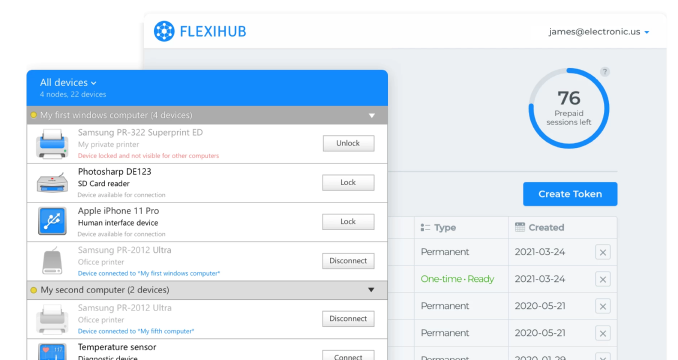That’s all there is to it! The connected device will be recognized by the VMware guest operating system just like it was physically connected to the USB peripheral.
Benefits of using FlexiHub to connect VMware to an iPhone
- FlexiHub is a cross-platform solution allowing you to share USB devices in virtual environments on Windows, Linux, or macOS hosts.
- FlexiHub uses redirection technology to enable USB devices to be shared across a network. Data transmitted through a computer’s USB ports can be redirected to any IP-based network like the Internet or a company LAN. It’s an efficient solution for connecting USB devices to virtual environments.
- FlexiHub detects new USB devices attached to the server automatically and immediately makes them available to clients.
- FlexiHub uses 2048-bit SSL encryption to securely transmit data. This additional protection safeguards your data from misuse by unauthorized individuals.








